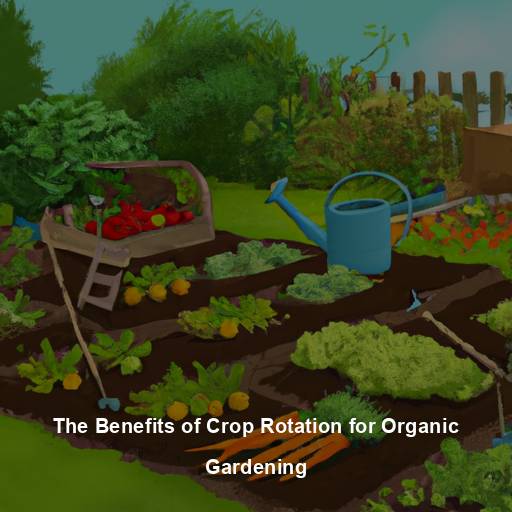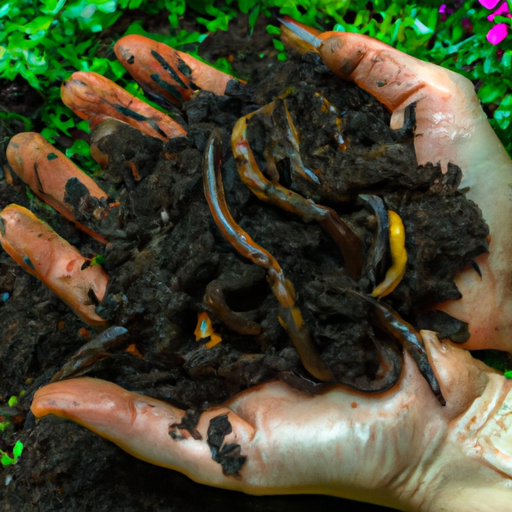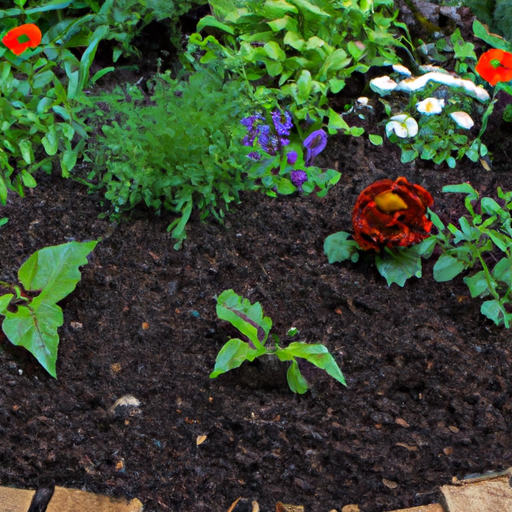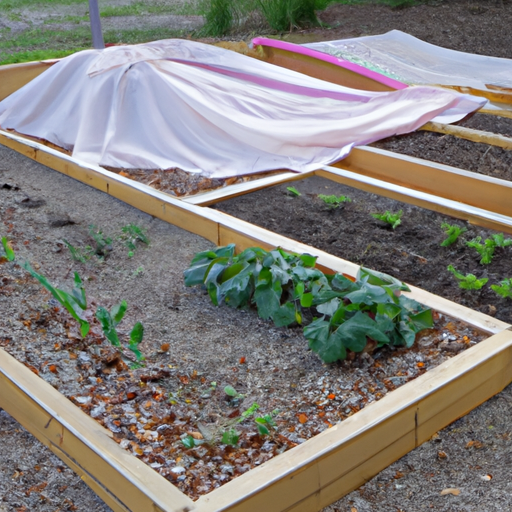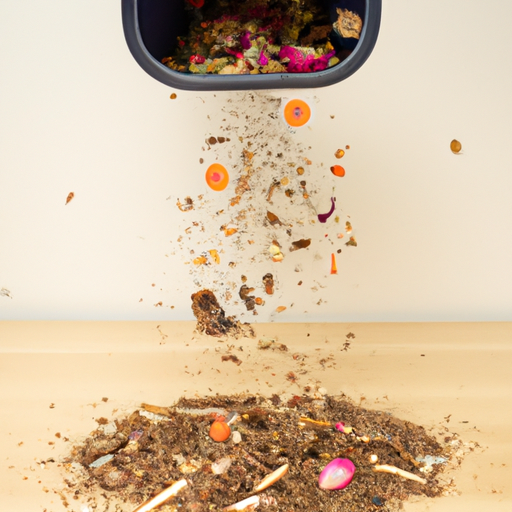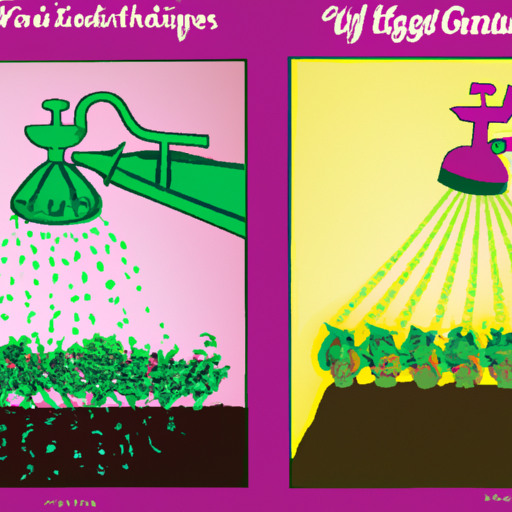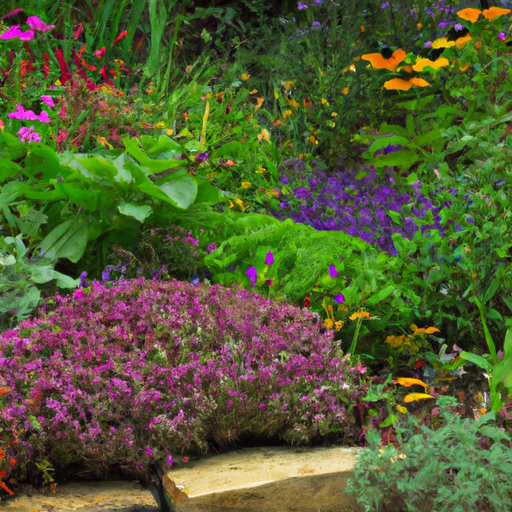If you’re an organic gardener, then chances are that you’re already familiar with the benefits of crop rotation. But if not, let me tell you – it’s a game changer! Crop rotation is simply the practice of changing what crops you plant in a given area from year to year.
The benefits of this simple technique are many and varied, ranging from better soil health to higher yields and less pest pressure. One of the primary benefits of crop rotation is its ability to improve soil health. By rotating crops, different plants take up different nutrients from the soil, which helps prevent depletion of any one nutrient over time.
Additionally, certain plants also have the potential to add beneficial nutrients back into the soil through their root systems or through nitrogen fixation. And because different crops can have varying levels of susceptibility to diseases and pests, rotating them can help reduce overall pest pressure in your garden.
With all these benefits and more, there’s no reason not to start incorporating crop rotation into your organic gardening practices today!
Improved Soil Health
Improving soil health is one of the primary goals of organic gardening, and crop rotation can help achieve this.
By rotating crops, gardeners can avoid depleting the soil of specific nutrients that certain plants require to thrive.
Additionally, composting benefits are maximized when a variety of plant residues are added to the compost pile.
Biodiversity advantages also come into play with crop rotation, as planting different types of crops in succession can help prevent pests and diseases from building up in the soil.
As Master Gardeners know, maintaining healthy soil is essential for successful organic gardening, and incorporating crop rotation techniques is an excellent way to achieve this goal.
Higher Yields
One of the most significant benefits of crop rotation for organic gardening is higher yields.
Crop diversity ensures that soil nutrients are replenished, and pests and diseases are kept at bay.
By rotating crops every season, you can reduce the risk of depleting specific nutrients in your soil, which will ultimately lead to lower yields.
Additionally, different plants have varying nutrient requirements; by planting a diverse range of crops, you can ensure that all necessary nutrients are present in the soil.
Furthermore, crop rotation helps regenerate the soil by promoting beneficial microorganisms that break down organic matter and provide essential nutrients to plants.
Overall, if you want to maximize your yield while maintaining healthy soils, incorporating crop rotation into your gardening practices is an excellent way to achieve this goal.
Pest And Disease Control
Did you know that crop rotation not only increases soil fertility and reduces weed growth, but it also helps control pests and diseases?
According to a study by the University of California, rotating crops can decrease pest populations as different plants attract different types of pests.
Companion planting is another technique used in organic gardening to deter pests.
For example, planting marigolds alongside tomatoes can help repel nematodes.
Additionally, introducing natural predators such as ladybugs or praying mantises can provide long-term pest control without harming the environment.
By implementing these practices, gardeners can reduce their reliance on chemical pesticides and promote a healthier ecosystem for all living organisms involved in agriculture.
Nutrient Cycling
To further enhance the benefits of crop rotation in organic gardening, it is important to understand the concept of nutrient cycling.
Nutrient cycling refers to the process by which essential nutrients are taken up by plants and returned back to the soil through various biological and physical processes.
Crop rotation plays a pivotal role in nutrient cycling because it allows for plant diversity, leading to improved soil fertility.
When different crops are planted in succession, they utilize varying amounts of nutrients from the soil. This prevents depletion of specific nutrients that may occur if the same crop is grown repeatedly on the same plot of land.
Furthermore, when leguminous crops such as peas or beans are included in the rotation cycle, they fix atmospheric nitrogen into the soil, which can be utilized by subsequent crops.
By implementing a crop rotation plan that includes a diverse range of crops with varying nutrient demands, gardeners can ensure that their soil remains fertile and productive over time.
Additionally, this practice reduces reliance on synthetic fertilizers and pesticides – making it an environmentally friendly option for maintaining healthy soils while simultaneously growing nutritious produce.
Sustainability And Long-Term Success
To truly achieve sustainability and long-term success in organic gardening, it is crucial to implement crop rotation as part of your regular practice.
By rotating crops, you can effectively reduce the risk of pests and diseases while also improving soil health through natural fertilization.
Composting techniques are a great way to add nutrients back into the soil and maintain its fertility over time.
Additionally, planting a diverse range of crops helps prevent depletion of specific nutrients from the soil, ultimately leading to better yields and healthier plants.
Remember that successful organic gardening takes patience and dedication but implementing simple practices such as crop diversity and composting can lead to greater overall success for years to come.
Frequently Asked Questions
How Often Should Crop Rotation Be Done In An Organic Garden?
Just like a well-oiled machine, an organic garden needs regular maintenance to keep it running smoothly. Crop rotation is the key to ensuring that your soil stays healthy and free of pests.
It’s like giving your garden a fresh start every year, allowing different crops to replenish nutrients in the soil while fending off harmful insects and diseases. But how often should you rotate your crops? The answer depends on several factors such as crop types, climate, and available space.
Generally speaking, rotating crops every three years is recommended for most gardens. This gives enough time for the previous crop’s residues to break down fully, reducing weed growth and soil-borne infections. Additionally, this practice helps prevent nutrient depletion by balancing out the demands made by each plant species over time.
Ultimately, proper crop rotation leads to better yields and healthier plants without relying on synthetic pesticides or fertilizers – making it a cornerstone of any successful organic gardening approach. So if you want to ensure that your garden thrives year after year, be sure not to overlook the benefits of crop rotation: soil health and pest management are just two reasons why it’s worth considering!
Can I Rotate Crops In A Small Garden Space?
Yes, it’s absolutely possible to rotate crops in a small garden space!
Vertical gardening and companion planting are two great techniques that can help maximize your yield while still allowing for crop rotation.
By using vertical structures like trellises or stacking planter boxes, you can grow more plants in less space.
Companion planting involves growing different types of plants together that benefit each other – for example, planting beans next to corn so the beans can climb up the stalks and also fix nitrogen into the soil.
These methods make it easier to switch out crops from season to season without sacrificing precious square footage.
What Are Some Common Crop Rotation Mistakes To Avoid?
Common crop rotation mistakes can lead to decreased yields, increased pest and disease problems, and soil nutrient depletion. To avoid these issues, it is important to follow some key tips for successful crop rotation in organic gardening.
One common mistake is not properly planning the rotation sequence or forgetting to rotate certain crops altogether. It’s also important to consider the specific needs of each crop in terms of soil pH, moisture levels, and nutrient requirements when deciding on a rotation plan.
Another mistake is planting too much of one type of plant family in the same area over multiple growing seasons, which can increase pest pressure and deplete soil nutrients.
By avoiding these common mistakes and following smart crop rotation practices, you can optimize your garden’s health and productivity while maintaining an organic approach to farming.
How Does Crop Rotation Affect The Taste And Quality Of The Produce?
Imagine taking a bite out of a juicy, ripe tomato fresh from your garden and being met with an explosion of flavor that leaves you speechless. That’s the magic of crop rotation!
By moving crops around each season, we allow for crop nutrient cycling and promote soil microbial diversity – leading to produce that’s bursting with flavor and nutritional value.
As Master Gardeners, we know that the health of our plants is directly tied to the health of our soil. Crop rotation helps prevent disease buildup and pest infestations while promoting healthy growth for all our beloved fruits and vegetables.
Trust us when we say: once you try it, there’s no going back!
What Are Some Alternative Methods To Crop Rotation For Organic Gardening?
When it comes to organic gardening, crop rotation is an effective technique for maintaining soil health and preventing pest and disease buildup.
However, there are alternative methods that can also be employed.
Companion planting involves strategically placing plants together in the same bed based on their beneficial relationships, such as marigolds repelling nematodes or tomatoes improving basil flavor.
Intercropping involves growing multiple crops in the same field at the same time, which can help maximize space usage and reduce weed growth.
Both of these techniques offer unique advantages and can be used in conjunction with crop rotation for a thriving organic garden.
Conclusion
As a Master Gardener, I can attest to the many benefits of crop rotation for organic gardening. By rotating your crops each year, you can prevent soil-borne diseases and pests from building up in your garden beds while also improving soil fertility.
But how often should you rotate your crops? Well, that depends on several factors such as the size of your garden space and what types of plants you are growing.
If you have a small garden space, don’t worry! Crop rotation is still possible by using raised beds or container gardens. Just be sure to plan ahead and choose complementary plant families that will work well together. And when it comes to avoiding common mistakes like planting the same family of vegetables in the same spot every year, simply keep track with a garden journal or map.
But perhaps most importantly, crop rotation can greatly affect the taste and quality of your produce. Healthy soil leads to healthy plants which then lead to delicious fruits and veggies packed full of nutrients.
So if you want to improve both the health of your garden and yourself, consider implementing crop rotation into your organic gardening routine today! Coincidentally, not only does crop rotation benefit our physical health but it also promotes mental wellness.
There’s something truly satisfying about planning out a diverse array of crops each season and watching them thrive under your care. Plus, harvesting fresh produce from your own backyard just feels good – it connects us back to nature and gives us a sense of accomplishment.
So why not incorporate crop rotation into your gardening practice today? Your body (and mind) will thank you for it!
